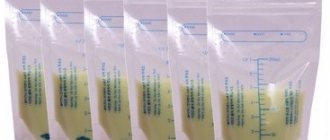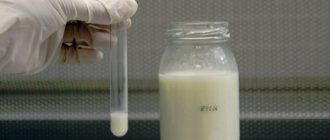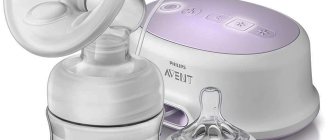The best product for a baby is breast milk. It contains all the nutrients, vitamins, and microelements so perfectly balanced that no mixture in nature, no matter how expensive it is, can replace it. Let's look at proper storage of breast milk.
However, due to the peculiarities of the modern lifestyle and fast pace, a young mother sometimes has to leave the baby for several hours, and sometimes days. To make the separation as painless as possible, you need to learn how to express and ensure proper storage of milk.
You have to express breast milk in the following situations:
- the birth of a premature baby who is temporarily separated from the mother due to the need for treatment (or is with the mother, but cannot adequately grasp the nipple and suckle);
- the birth of a child with any disease that requires medical intervention and/or interferes with the sucking process;
- separation of mother and child for any reason (illness of mother or child, mother going to work, etc.). In this option, pumping is necessary both to meet the baby’s needs and to maintain the mother’s lactation. If the mother goes to work and pumps regularly, it is worth leaving morning, evening and night feedings if possible;
- feeling of fullness in the mammary glands. This often happens in the early stages of lactation. It is optimal in such situations to put the baby to the breast. If this cannot be done for some reason, you can express a little milk (only until the discomfort disappears, but not all the milk that can be expressed);
- in the early stages of introducing complementary foods (when preparing porridge with breast milk).
The optimal supply of nutrients and immunoglobulins to the baby is ensured by feeding recently expressed milk (for example, if the mother goes to work and pumps regularly, the baby can today receive milk expressed yesterday).
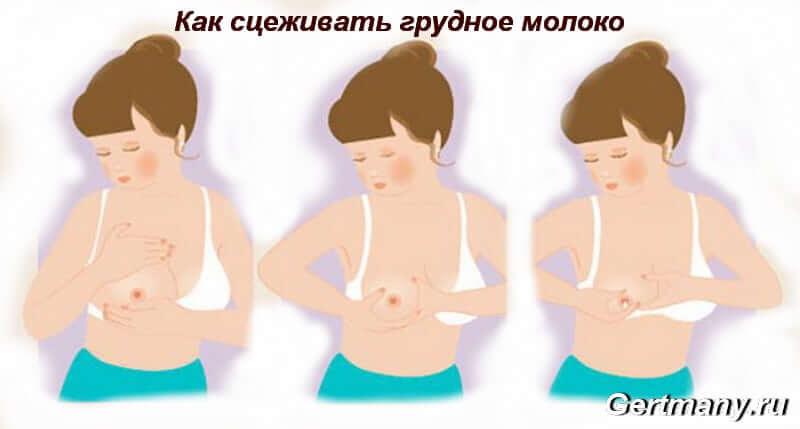
How to pump your breasts
The first pumping will have to be done in the maternity hospital. Most likely, lactation will be abundant, and a newborn baby will not be able to eat so much milk. Pumping will help avoid congestion. Decantation is also necessary to relieve tension that prevents the baby from latching on to the nipple.
Basic principles:
- Don't panic or worry.
- Perform the very first procedure under the supervision of a nurse to ensure proper technique.
- Listen carefully to your feelings. There shouldn't be any pain.
- Express milk only until relief occurs, so as not to increase lactation even more.
How to store breast milk after pumping in a bottle
Glass containers are considered the most environmentally friendly option for storing expressed breast milk. Bottles made from this material are good for both preparing and feeding the baby. However, glass containers are not suitable for the freezer, because... they cannot withstand sudden changes in temperature and can easily crack and break. Therefore, it is better to use them when placing milk in the refrigerator or at above-zero temperatures in the air. Before storing expressed breast milk in a bottle, you need to wash and sterilize it.
See also: Good feeding of the baby
First of all, after feeding and completely satiating the baby, express at least a little into a clean (boiled) bottle of a relatively small size. Of course, breast milk requires special storage; you cannot simply boil this product and put it in a cold place, as it will lose all its beneficial properties. To begin with, the milk should be placed in the refrigerator. And after cooling, transfer it to the freezer.
At a temperature of minus six degrees, breast milk can be stored for up to six months, and at a lower temperature (minus 20) for up to two years. A prerequisite is the need to sign the day and time of collection of the product. To do this, you can stick a piece of adhesive tape or paper with tape on the bottle, on which you can indicate the date. Don't forget the laws of physics! When frozen, liquid expands. Leave some free space in the milk container.
Of course, it is unlikely that you will be able to collect the required amount of milk at one time, so this can be done in several pumping sessions. The main thing is that the portion of new milk should not exceed the volume available in the bottle, as the ice will melt and the product will become unusable.
Thawing breast milk should be taken care of in advance. To do this, you need to remove the bottle from the freezer (about 12 hours before the intended feeding) and put it in the refrigerator. It is not recommended to defrost milk in a microwave oven. Thawed product can be stored for no more than 24 hours.
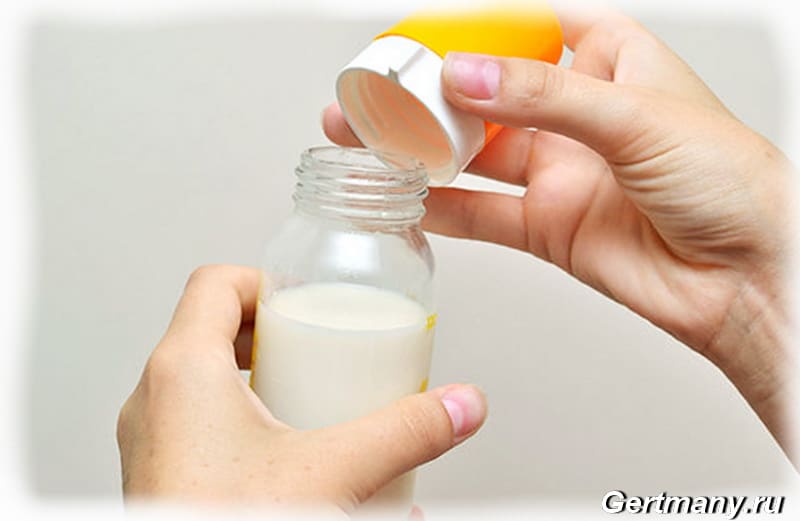
How to warm breast milk
There are various ways to prepare chilled milk.
Most often this is done using a “water bath”. Pour water into the pan, after placing a special stand or a small piece of fabric folded in several layers on the bottom. Dip the container of milk into the pan and place it on the stove. Maintain the temperature of the water in the pan sufficient to gradually warm the milk. Do not allow the bottom of the container to come into contact with the hot bottom of the pan.
You can place a container of chilled milk in hot water. As the water cools, change it until the milk is warm. This method is easier, but you will have to wait longer.
There are also special electrical devices for heating milk. If you frequently defrost milk, it makes sense to purchase it.
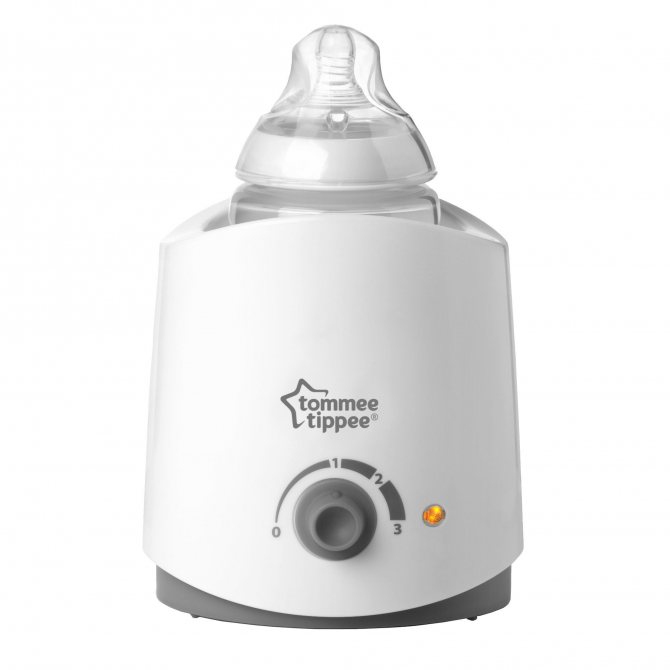
How long can breast milk be stored?
When storing breast milk reserves, you need to know where, for how long and at what temperature it can be stored.
In a refrigerator:
This product can be stored in the refrigerator for up to 8 days at temperatures from 0 to + 5 degrees. At the same time, you need to place it as deep as possible. Fresh milk must be cooled before storing in the refrigerator.
In the freezer:
Storing breast milk in the freezer at temperatures from -13 to -18 degrees, milk can be stored for no more than six months, and at temperatures from -18 to -20 degrees for no more than a year. Before freezing, cool the milk in the refrigerator.
See also: PREPARE YOUR CHILD FOR KINDERGARTEN
At room temperature:
At room temperature (from +19 to +22 degrees), breast milk can be stored for no more than ten hours. And at a temperature not higher than + 26, breast milk can be stored for no more than 6 hours. Scientists have studied that the substances that make up breast milk can counteract the proliferation of various microbes, so the milk does not spoil.
How to use it correctly?
Regardless of the storage technique, experts identify only two ways to heat the expressed product:
- Under the hot tap. Place the container under running hot water and shake the contents of the container regularly.
- In a water bath. Place the bottle in heated water and shake constantly to achieve maximum uniform heating.
The optimal temperature of defrosted milk is 36.6 °C (flesh). To determine it, you need to drop a few drops of milk nutrition onto the skin of the wrist. If you do not feel anything, the temperature regime is met.
Avoid heating expressed milk in a saucepan or microwave.
There is a high probability of overheating, which means the product will lose important qualities. In addition, a microwave creates areas with different temperature conditions, and this can lead to a burn to the oral cavity.
Storing expressed breast milk outside the home
A nursing mother should have the right to store milk outside the home, for example, at work, or in the refrigerator of a child in a nursery. There is no need to take any special precautions typically associated with storing bodily fluids in public areas. In an article published in 1997 in The Journal of Human Lactation, Lori Nommsen-Rivers advises that if employees complain about storing breast milk in a shared refrigerator, you can avoid unnecessary discussion by placing the container of expressed milk in an additional opaque container.

Leave it in the freezer
After pumping, some women place the milk in the freezer. This is an absolutely correct step, especially if it is necessary to maintain natural feeding during prolonged separation from the child or long-term treatment with serious drugs.
Freezing mother's milk is a simple procedure, which, however, requires the following important rules:
- Use special bags for storing breast milk. This is a disposable and sterile package, which is why preliminary preparation of the container is not necessary. The bags do not take up much space, so a fairly impressive amount can fit in the freezer.
- Another convenience is that the bags have a special “plate” on which you should write the day of straining and freezing healthy milk. This precaution will help you determine exactly whether the product can be given to a child.
- Avoid containers made of glass. Such containers may burst when frozen or removed from the freezer.
- Do not freeze milk in large containers. On average, a baby in the first half of life needs about 120 grams of nutrition for a single meal. If you prepare the product in large portions, the remaining milk after feeding will have to be thrown away.
Experts have established exact periods during which the expressed product can be left in the freezer unit. Maximum storage time is 6 months.
However, such a duration is possible only if an important condition is met - the containers are placed in an individual freezer compartment.
If the container with milk is placed in a common compartment, the storage time is reduced significantly. The milk supply will need to be spent in fourteen days.
Storing breast milk: a few tips
I would also like to give some tips on how to increase the amount of breast milk, which is especially important during the collection period:
- Drink more fluids, especially warm ones;
- Eat well, eat high-calorie foods;
- Get enough sleep;
- Get enough rest:
- Take a multivitamin;
- Drink carrot juice;
- Massage your breasts after feeding;
- Apply your baby more often;
- Drink herbal teas for mothers or special dry protein mixtures (if necessary).
Proper storage of breast milk, personal hygiene and compliance with the rules are the key to your baby’s health, so it is better not to freeze the milk that you plan to give to your child in the next two days in order to preserve the immune factors of the milk. Thawed human breast milk cannot be re-frozen or stored. Before expressing milk, be sure to clean your breast pump and wash your hands with soap and water. Before use, all components of the breast pump, milk collection containers and milk storage containers must be washed and sterilized.
Remember that the breast pump is intended for individual use and should not be loaned to other mothers. Human milk is an ideal food for babies and no artificial formula can replace it. Only it contains all the necessary substances for the maturation of the child’s nervous system and brain, only it helps the formation of all functional systems, protects the baby from diseases and guarantees the formation of strong immunity, therefore it is necessary to make every effort to maintain lactation.
**************************************** ************************* Don’t forget to share the information you read on social networks. You can help people who will find this information useful.
